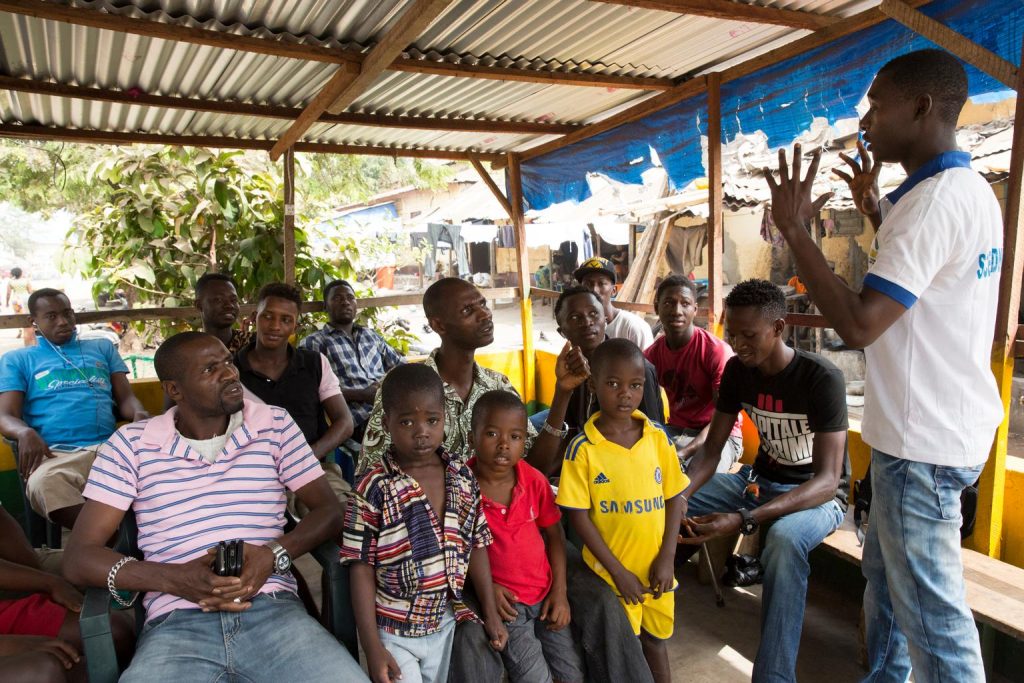Transmission of zoonotic pathogens from bats to humans through direct and indirect contact with bats raises public apprehension about living close to bats. In the township of Ve Golokuati in Ghana, several “camps” of Epomophorus gambianus roost in fruit trees that provide ecosystems services for residents. This study explored human-bat interaction in the township and the potential risks of disease transmission from bats to humans. Data were derived through questionnaire administration and participatory appraisal approach involving focus group discussions, participatory landscape mapping, and transect walk.
The study found that most human activities within the township, such as petty-trading, domestic chores, and children’s outdoor recreation, exposed people to bats. Though there have been no reported cases of disease spillover from bats to humans from the perspective of residents and from medical records, respondents whose activities brought them closer to bats within the township were found to be more likely to experience fevers than those who do not interact with bats frequently. The study recommends education of community members about the potential risks involved in human-bat interactions and makes suggestions for reducing the frequent interactions with and exposure to bats by humans.



